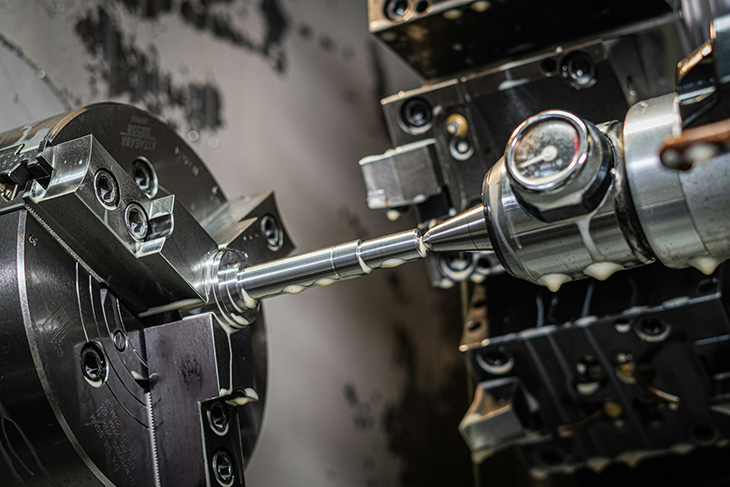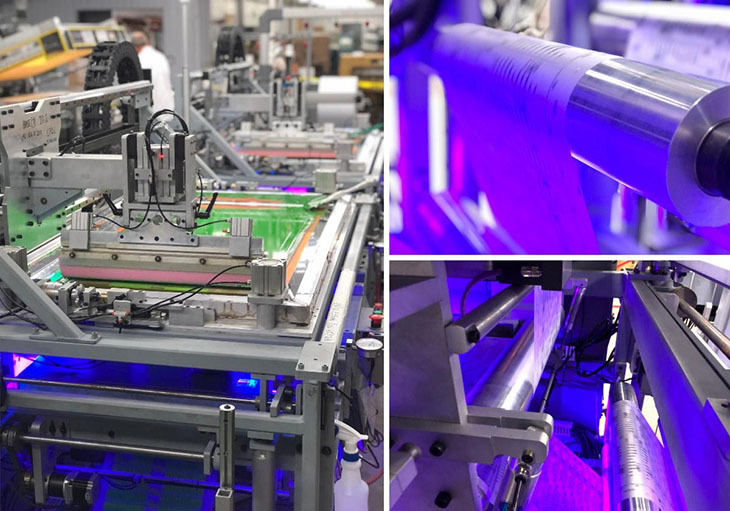Emily Newton is an industrial journalist with over five years experience covering the manufacturing sector. As Editor-in-Chief of Revolutionized, she also covers trends in other industrial sectors, like logistics and engineering. Subscribe to her newsletter for more of her articles.
Data is more accessible than ever, and it’s vital that companies take advantage of it. The rise of smart machinery and IIoT sensors has made it easy to gather process data on a range of variables, like differential pressure, flow, vibration and temperature.
Statistical process control and similar methods make it possible to use manufacturing and statistical techniques information to control a production method. These approaches make things much more consistent than they would be otherwise, enabling businesses to continuously improve their practices.
Determining what information to gather and how is not always straightforward. Implementing statistical or data-driven process control can also be a complex process. However, with the right strategies, any business can begin doing so and reaping the rewards.
Benefits and Challenges of Using Process Control Data
Industrial automation and process control rely on effective data. You need to be able to measure machine performance accurately, reliably and consistently. Analysis of this data makes it possible to adopt changes that lead to optimization. In some cases, data may enable businesses to implement automatic process control systems that adapt to changing inputs.
Novel technology makes gathering information much more straightforward. Manufacturers equip many intelligent machines and other IoT devices to gather a massive amount of real-time information on their functions. This data can be sent to the cloud via intelligent network controllers and other smart devices, making it highly accessible to facility systems.
In practice, this information can enable new process and maintenance strategies like predictive maintenance, which can reduce upkeep costs by up to 30%-40% year over year. Factory owners can also save 8%-12% more than if they were to use a standard plan, further highlighting the benefits of implementation.
Analyzing and applying this data can be a more complex challenge. While it enables data-driven process control, displays critical alarms automatically, and offers statistical analysis to optimize production methods, it can be difficult to determine how the business should use it.
Critical Barriers to Implementing Process Control Data
A multivariable transmitter can easily track dozens of parameters. A business will quickly produce an overwhelming amount of data if these sensors are used on each machine in a facility. Extracting insights from this large dataset requires the correct approach.
Legacy data-driven process control systems, like a statistical network, may also not be prepared for inputs from smart sensors a business wants to implement. Similarly, data from SPC systems may be siloed by default and not readily available to smart designs.
Conventional SPC methods may also be harder to apply when there are so many potential independent variables a business can track. At the same time, IoT is often a good complement to SPC, as it enables companies to monitor independent variables that may be affecting critical product characteristics.
Systems that were regarded as separate in the past are also often being treated as unified. Many businesses and organizations are merging power and process control into cooperative systems.
This means minimizing variance in the performance of electrical equipment, like by the effective maintenance of oil-filled transformers, may be just as important as reducing it in machine performance.
Strategies for Implementing Process Control Data
Implementing conventional quality control methods, like SPC, is traditionally where facilities start. Businesses can utilize this method by first identifying critical product quality characteristics. They can then determine which processes have the most significant impact.
After identifying which variables influence these processes, the business can create an action plan for how they can be controlled. For example, temperature control may help make more consistent products in one facility, while another may need to keep machine vibration within certain limits.
Once variation in one variable is reduced, the business may move on to another, continuing to make production processes more consistent.
SPC can be manual or managed by a digital system. Many facilities may rely on legacy SPC systems that are often highly complex, sometimes unwieldy, and often designed to accept certain inputs from existing machines or sensors. They may not be built for interoperability with smart technology, meaning businesses must be intentional in deciding how to integrate intelligent sensor data into SPC workflows.
Businesses can also use more modern systems that can interface with smart devices. For example, IBM has used IoT devices to improve the function of SPC systems. In several cases, this was done by gathering data the existing SPC systems wasn’t accounting for. In one case, the temperature of a furnace may be measured, but the unmeasured airflow was causing defects in a finished product.
Similarly, an SPC may require the measurement of film thickness of a deposited layer, but surface nonuniformity was the most common defect. Oversights like these can be managed with additional data, like the information smart sensors can capture.
Other systems can be used to supplement the SPC by providing services that allow a business to take full advantage of data from smart sensors.
Businesses typically use specific systems in handling certain categories of data. For example, alarm management networks monitor notifications generated by sensors. A facility may use these systems to display critical alarms automatically. Another facility may configure it to take certain actions in a given alarm scenario.
Similarly, calibration management systems may also be necessary to ensure sensors are working properly and the data they provide is accurate.
Opportunities and Challenges in Data-Driven Process Control
Process control is often essential for modern factories and similar facilities. Data-driven systems can manage input variables and help ensure more consistent output. However, taking full advantage of the data available to most businesses can be challenging. Existing SPC systems may not consider all possible variables, and legacy technology may not be readily interoperable with Industry 4.0 tech like IoT sensors.
Setting up an SPC system and supporting it with data from IoT devices is not always straightforward, but it can help improve the quality and consistency of facility processes. This will translate to all-around improvements that boost efficiency and, as a result, the bottom line.























